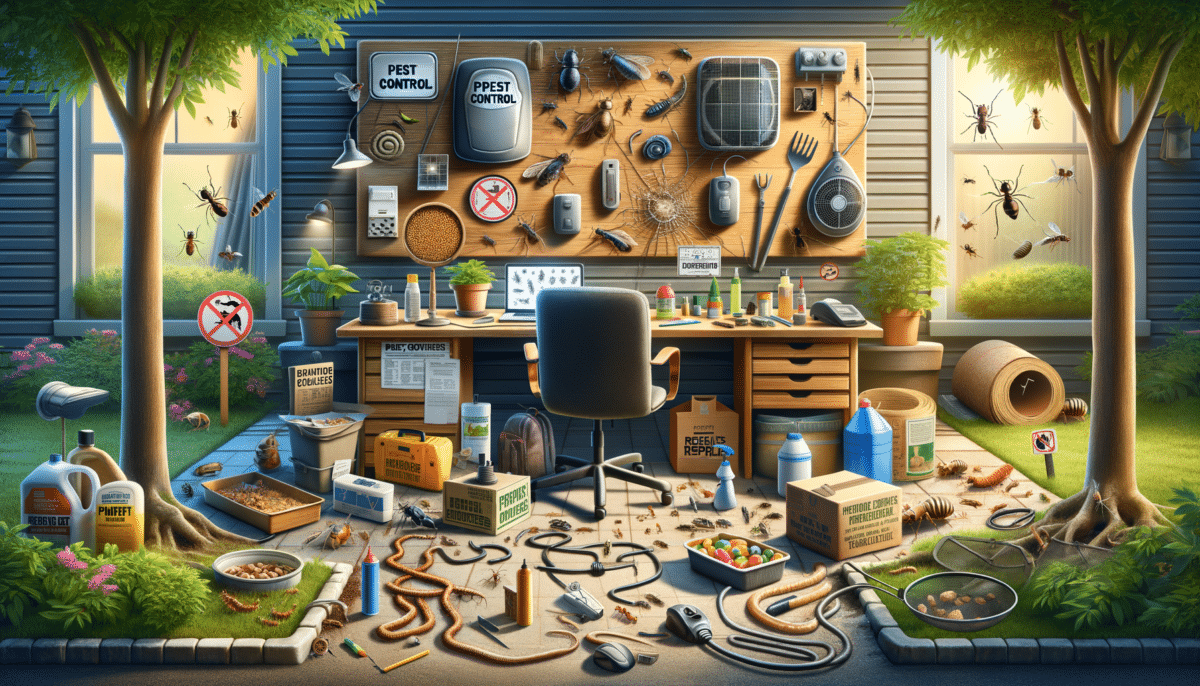Introduction to Pest Control
Pest control is an essential practice for maintaining a healthy and safe environment, whether in residential, commercial, or agricultural settings. The presence of pests can lead to significant health risks, damage to property, and economic losses. In this article, we will explore the importance of pest control, various strategies employed to manage pests, and how these methods contribute to a sustainable ecosystem.
Types of Pests and Their Impact
Understanding the types of pests and their potential impact is crucial in developing effective control strategies. Pests can be broadly categorized into insects, rodents, and wildlife. Each category poses unique challenges and requires specific approaches for management.
Insects: Common insects such as mosquitoes, ants, and termites can cause health issues and structural damage. For example, mosquitoes are vectors for diseases like malaria and dengue fever, while termites can compromise the integrity of wooden structures.
Rodents: Rats and mice are notorious for spreading diseases and causing property damage. They can contaminate food supplies and gnaw on electrical wires, leading to fire hazards.
Wildlife: Larger animals, such as raccoons and skunks, can also become pests when they invade urban areas, potentially spreading diseases and causing destruction to gardens and homes.
Recognizing the specific threats posed by different pests allows for targeted interventions, minimizing their impact on human health and property.
Integrated Pest Management (IPM)
Integrated Pest Management (IPM) is a holistic approach that combines various strategies to control pest populations effectively. Unlike traditional methods that rely heavily on chemical pesticides, IPM focuses on long-term prevention and minimal environmental impact.
Key components of IPM include:
- Monitoring: Regular inspection and monitoring of pest activity to identify and assess infestations.
- Prevention: Implementing measures to deter pests, such as sealing entry points and maintaining cleanliness.
- Biological Control: Utilizing natural predators or parasites to manage pest populations.
- Mechanical Control: Physical methods like traps and barriers to capture or exclude pests.
- Chemical Control: Judicious use of pesticides when necessary, focusing on targeted application to minimize risks.
IPM promotes a balanced ecosystem by reducing reliance on chemicals and encouraging natural pest control mechanisms.
Environmental and Health Considerations
The use of chemical pesticides, while effective, raises concerns about environmental and health impacts. Pesticides can contaminate soil, water, and air, posing risks to non-target organisms, including humans. Therefore, it is vital to consider alternative methods and adhere to safe practices when using chemical controls.
Some environmentally friendly pest control methods include:
- Botanical Pesticides: Derived from plants, these pesticides are less toxic and biodegradable.
- Organic Farming Practices: Emphasizing crop rotation, companion planting, and natural fertilizers to reduce pest pressure.
- Habitat Manipulation: Altering the environment to make it less conducive to pest survival.
By adopting sustainable pest control practices, we can protect ecosystems and promote public health.
Future Trends in Pest Control
As technology advances, the field of pest control is evolving with innovative solutions. Emerging trends focus on precision and sustainability, aiming to improve efficiency and reduce environmental impact.
Some notable trends include:
- Smart Pest Monitoring: Utilizing sensors and IoT devices to track pest activity in real-time for prompt response.
- Genetic Control: Research into genetic modifications to suppress pest populations, such as sterile insect techniques.
- Biopesticides: Development of microbial and biochemical agents that are specific to pests and environmentally safe.
These advancements hold promise for more effective and sustainable pest management strategies, ensuring a safer and healthier future.
Conclusion: Embracing Effective Pest Control
Pest control is a critical aspect of safeguarding health, property, and the environment. By understanding the types of pests, employing integrated management strategies, and considering environmental impacts, we can achieve effective and sustainable pest control. As we move forward, embracing innovative technologies and practices will be key to addressing the challenges posed by pests in a changing world.
